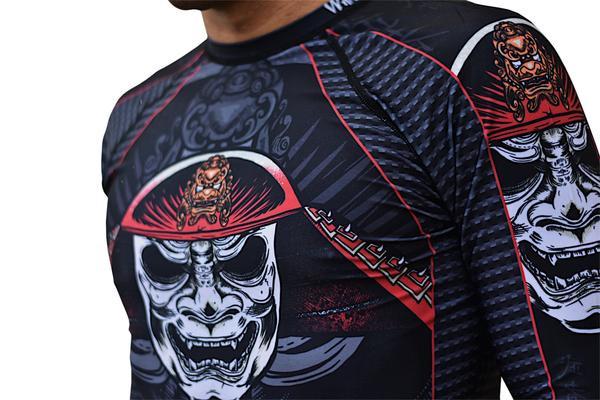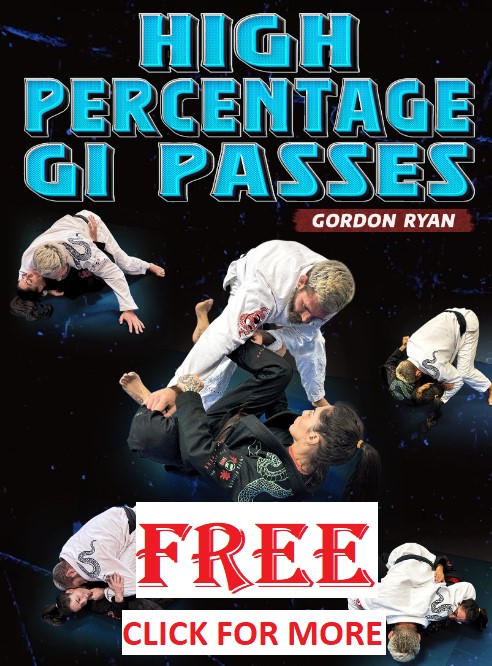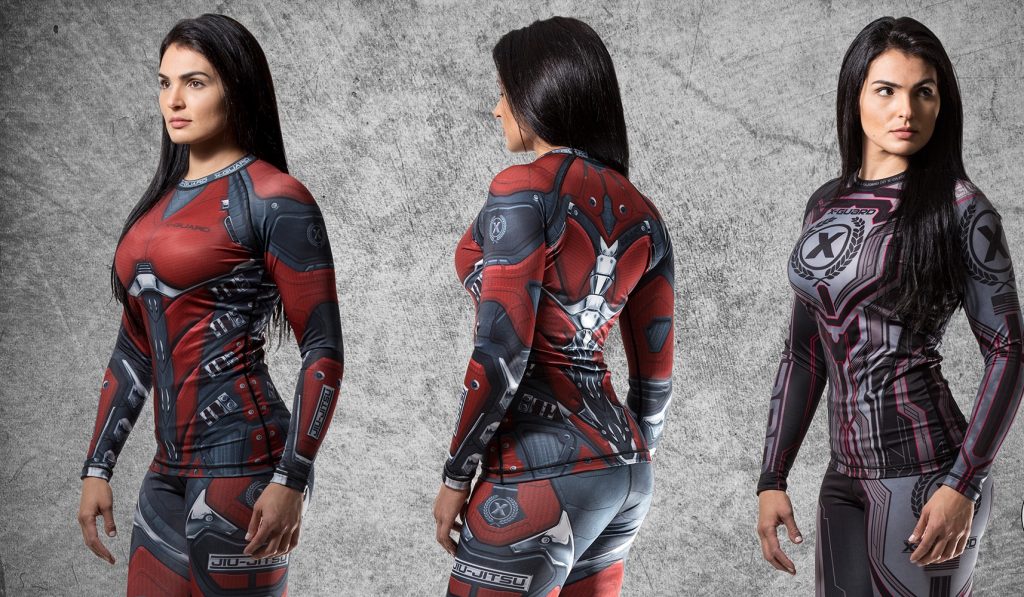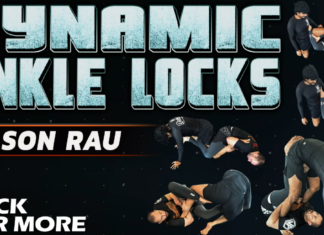
BJJ rashguards come in all shapes and sizes. They are an as unique part of the sport as the berimbolo is. Despite the Gi’s prevalence in the sport, modern times have seen the rise of the rashguards. In no small part, this is due to the rise of the No-Gi BJJ scene. Lately, thanks to events like EBI, Submission Underground, and others, No-Gi practitioners got a platform for professional competition. Aside from that, they got a platform for displaying all kinds of BJJ rashguards. From all black, through sponsor and club markings to as wacky full body designs as you can imagine – they’re all out there. Don’t forget to check our list of the best BJJ Rashguards available today.
However, BJJ rashguards are far more than just coll attire. Let’s be honest, BJJ is an art where innovation and experimentation are encouraged. Today, you have thousands of Gi designs to choose from, so why would rashguards be any different? In truth, rashguards have been a part of BJJ for a long time, often worn under the Gi or during rare No-Gi classes. Exceptions were certain exclusive No-Gi schools, like 10th Planet, for example, that never went the Gi way. So, it is no wonder that with the rise of No-Gi Jiu-Jitsu, BJJ rashguards with all sorts of designs came to the forefront.
BJJ Rashguards 101
The rise of MMA in the ’90s is the main culprit behind the subsequent development of No-Gi Jiu-JItsu. Namely, the always increasing popularity of MMA and the need to be legit on the ground brought about the rashguard industry. So much so, that even the IBJJF organizes No-Gi events that culminate in the No-Gi European and World championships. Not only that, but they have a strict dress-code when it comes to rash guards.
In the beginning, the person that most people associate with rashguards was undoubtedly Georges St. Pierre. He was rarely seen training without one, which prompted most aspiring MMA athletes to copy him. In terms of MMA training, rashguards turned out to be very popular during BJJ practice. Was it a question of style, an aversion to naked sweaty men or simplicity, we’ll never know. What we know for sure is that you’ll rarely see someone in No-GI class or competition without at least an upper body rashguard.
In training environments, BJJ rashguards often represent the academies where a student trains. For example. Gracie Barra students have a rashguard line to choose from, as do 10th Planet members. More often than not, competitors have a bunch of sponsors all over their rashguard and spats, not giving much thought to brand or design.
The IBJJF has, since the introduction of No-Gi, defined strict rashguard rules for competitors. First, the rashguards have to be ranked and they have to be IBJJF approved, which does not include every brand. Ranking displays the student’s belt rank somewhere along the rashguard, often on the sleeve.
Types Of BJJ Rashguards
To begin with, BJJ rashguards are not the same as compression shirts. Compression shirts are usually made of 4 layers and do not support constant contact. They restrict movements due to their thickness and do not fit the body as tight as rashguards do.
A proper rashguard, on the other hand, is made up of at least 6 layers. The sleeves are quite resistant to pulling and the stitching is tough and durable. Rashguards are typically made of spandex and nylon or polyester.
Rashguards are designed for a tight fit on the body, allowing unrestricted movement. This is crucial for BJJ or MMA training. Most BJJ Gi brands also make rashguards, with Tatami, TapOut, Bad Boy, OTM and Volcan among the most popular ones. Other, more generic sports brands like Nike, Under Armour and Reebok, also have rashguard designs, although these are not BJJ-specific.
In terms of basic design, they come in long and short sleeves for both rashguards and spats (leggings). Personal preference or training/competition requirements determine the type of rashguard an athlete uses.
What To Look For In A BJJ Rashguard
When it comes to choosing a BJJ rashguard, there are a few things to take into consideration. Of course, personal preferences are crucial, but there’s more to it than just a cool animal design.
In general, rashguards are designed to remove moisture from the body. This allows an athlete to stay cool and as dry as possible. The material should be tough enough to endure constant contact and friction. In that sense, BJJ or MMA specialized brands should be your first choice. Also, it is important to look at the stitching pattern. Flatlock stitching is by far superior to others for grappling training. Make sure the rashguard has at least 6 layers, as previously mentioned. This is going to allow for maximum mobility while staying tight. So quality should be your first priority.
Secondly, it is important to gar a rashguard that fits correctly. If it is too small or too big, it won’t fit your body the way it is supposed to. This will decrease the rashguard’s efficiency in friction prevention and will likely cause performance issues. Most manufacturers have size pretty precise size charts.
Furthermore, make sure you are within the bounds of your academy’s requirements. Some academies are pretty laid back while others insist that students wear matching attire. The same goes for the competition. It would be dumb to get disqualified because you showed up in a non-regulation rashguard.
Finally, you can think about style. If you are a competitor make sure you do your research to see if the tournament(s) have rules regarding fight attire. If so, your choices might be limited, because not all brands and designs are approved for certain competitions. Given there are no such requirements, though, you’re free to get the design you like the most.
Benefits Of Wearing A Rashguard
So, now that composition, types, style, and things to look for are out of the way, let’s see why you actually need a rashguard. Because it is not all style and flair when it comes to BJJ rashguards.
One major benefit of wearing a rashguard during training is preventing “mat burn”, or rashes. This holds especially true for competitions. BJJ mats are sturdy surfaces that are built to last. They’re made up of foam covered in very durable vinyl that provides certain traction. Exposed areas of the skin are often subject to burn because of the texture of the mats. What better case for wearing a long-sleeved rashguard and spats?
Similarly, they protect the body against possible skin infections. In BJJ the danger of skin diseases like ringworm is never far given the availability of sources. It is not only the gym or mats that have the potential to spread diseases. It takes just one person that’s not big on hygiene to put a gym in a precarious position.
From a more BJJ-specific perspective, rashguards provide more traction allowing for better grips. The more we roll, the more sweat accumulates, making gripping extremely difficult. People start to slip out with ease after the first few minutes. A rashguard allows you to connect way better and even hold on, making escapes harder for your opponent.
Lastly, BJJ rashguards provide good compression of the muscles. There have been several studies that show that rashguards help speed up injuries thanks to compression. Think about rashguards as compression braces for the whole body. They can not only help heal an injury but prevent one from happening in the first place.
Which BJJ rashguards are your go-to when it’s time to pick yourself a new one?
Why Does John Danaher Always Wear a Rashguard? Mystery Solved!


![Darce Choke Encyclopedia – Origins, Mechanics and Variations [2024] BJJ, choke, Brabo, BJJ Darce Choke, D'arce Choke, Darce BJJ Choke](https://bjj-world.com/wp-content/uploads/2017/11/JungPoirierLeeYahoo-218x150.jpg)











![Front Headlock and Turtle Escapes Brian Glick DVD Review [2024] Front Headlock and Turtle Escapes Brian Glick DVD Review](https://bjj-world.com/wp-content/uploads/2024/11/headlock-and-turtle-escapes-brian-glick-dvd-review-218x150.png)
![Basic Closed Guard Jasmine Rocha DVD Review [2024] Basic Closed Guard Jasmine Rocha DVD Review](https://bjj-world.com/wp-content/uploads/2024/11/basic-closed-guard-jasmine-rocha-dvd-review-218x150.png)
![Don’t Stand Up Chris Wojcik DVD Review [2024] Don't Stand Up Chris Wojcik DVD Review](https://bjj-world.com/wp-content/uploads/2024/11/dont-stand-up-chris-wojcik-dvd-review-218x150.png)
![EMU Guard 2.0 Benjamin Power DVD Review [2024] EMU Guard 2.0 Benjamin Power DVD Review](https://bjj-world.com/wp-content/uploads/2024/11/emu-guard-2-0-benjamin-power-dvd-review-218x150.png)
![The Whole Omoplata Enchilada Lyanne Perez DVD Review [2024] The Whole Omoplata Enchilada Lyanne Perez DVD Review](https://bjj-world.com/wp-content/uploads/2024/11/whole-omoplata-enchilada-lyanne-perez-dvd-review-218x150.png)
![No-Gi Defense Xande Ribeiro DVD Review [2024] No-Gi Defense Xande Ribeiro DVD Review](https://bjj-world.com/wp-content/uploads/2024/11/no-gi-defense-xande-ribeiro-dvd-review-218x150.png)





![Jeff Glover DVD Bundle Review: Chokin’ Around With Uncle Jeff [2024] Jeff Glover DVD Bundle Review: Chokin' Around With Uncle Jeff](https://bjj-world.com/wp-content/uploads/2024/10/jeff-glover-dvd-bundle-review-chokin-around-100x70.png)


![Mastering Takedown Prevention Steve Mocco DVD Review [2024] Mastering Takedown Prevention Steve Mocco DVD Review](https://bjj-world.com/wp-content/uploads/2024/11/mastering-takedown-prevention-steve-mocco-dvd-review-100x70.png)
![Front Headlock and Turtle Escapes Brian Glick DVD Review [2024] Front Headlock and Turtle Escapes Brian Glick DVD Review](https://bjj-world.com/wp-content/uploads/2024/11/headlock-and-turtle-escapes-brian-glick-dvd-review-100x70.png)






![Darces From Everywhere Kade and Tye Ruotolo DVD Review [2024] Darces From Everywhere Kade and Tye Ruotolo DVD Review](https://bjj-world.com/wp-content/uploads/2024/10/darces-from-everywhere-kade-and-tye-ruotolo-dvd-cover-100x70.png)



![Compass Kneebar System Charles Harriott DVD Review [2024] Compass Kneebar System Charles Harriott DVD Review](https://bjj-world.com/wp-content/uploads/2024/11/compass-kneebar-system-charles-harriott-dvd-review-100x70.png)




![Henry Akins Black Hole No-Gi Closed Guard DVD Review [2024] Henry Akins Black Hole No-Gi Closed Guard DVD Review](https://bjj-world.com/wp-content/uploads/2024/09/henry-akins-black-hole-no-gi-closed-guard-dvd-review-100x70.png)

